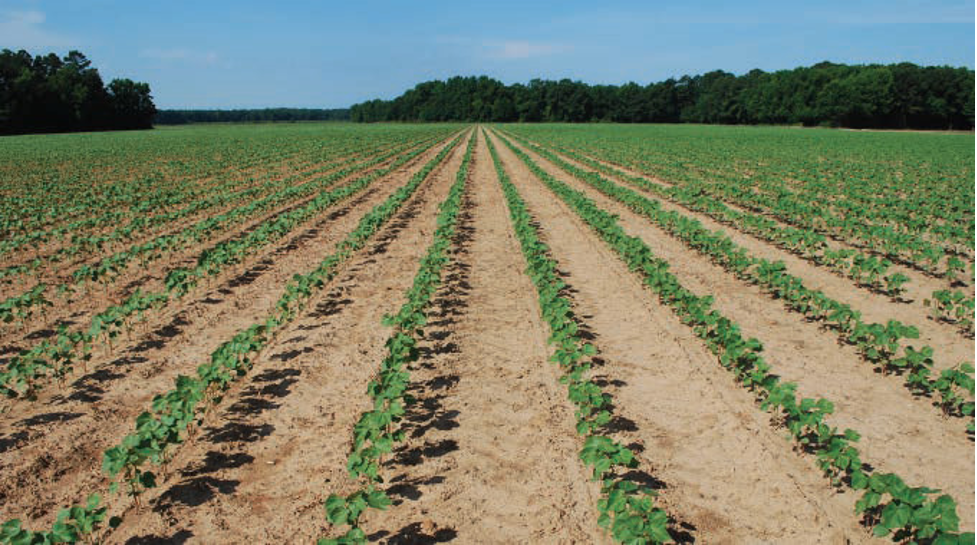Field Conditions Update
go.ncsu.edu/readext?938763
en Español / em Português
El inglés es el idioma de control de esta página. En la medida en que haya algún conflicto entre la traducción al inglés y la traducción, el inglés prevalece.
Al hacer clic en el enlace de traducción se activa un servicio de traducción gratuito para convertir la página al español. Al igual que con cualquier traducción por Internet, la conversión no es sensible al contexto y puede que no traduzca el texto en su significado original. NC State Extension no garantiza la exactitud del texto traducido. Por favor, tenga en cuenta que algunas aplicaciones y/o servicios pueden no funcionar como se espera cuando se traducen.
Português
Inglês é o idioma de controle desta página. Na medida que haja algum conflito entre o texto original em Inglês e a tradução, o Inglês prevalece.
Ao clicar no link de tradução, um serviço gratuito de tradução será ativado para converter a página para o Português. Como em qualquer tradução pela internet, a conversão não é sensivel ao contexto e pode não ocorrer a tradução para o significado orginal. O serviço de Extensão da Carolina do Norte (NC State Extension) não garante a exatidão do texto traduzido. Por favor, observe que algumas funções ou serviços podem não funcionar como esperado após a tradução.
English
English is the controlling language of this page. To the extent there is any conflict between the English text and the translation, English controls.
Clicking on the translation link activates a free translation service to convert the page to Spanish. As with any Internet translation, the conversion is not context-sensitive and may not translate the text to its original meaning. NC State Extension does not guarantee the accuracy of the translated text. Please note that some applications and/or services may not function as expected when translated.
Collapse ▲The weather has begun to take a turn for the better for the farmers in Sampson County. Fields were dry last week and some crops that I saw were under stress. Some farmers were forced to stop planting due to a lack of moisture and the cooler temperatures have not helped either. After the rains over the holiday weekend, soil moisture has been restored and planting has resumed throughout most of the county. The temperature also seems to be trending upwards, hopefully creating a recipe for crop growth heading into June. This will also provide more favorable conditions for cotton planting as soil temperatures rise.
Due to the cooler weather, I have seen some nutrient deficiencies mainly in corn. I have seen magnesium, phosphorus and potassium deficiencies, all of which can be attributed to cool weather or crop genetics as some varieties are more prone to early deficiencies. The cooler weather has slowed plant growth and the roots have not been able to grow deep enough into the soil to reach some of these nutrients. In most cases, warmer weather and therefore more optimal crop growth, will eliminate these deficiencies as plant roots grow deeper and reach the necessary nutrients.
Now that the rain has come and the temperatures are on the rise, the next issue will most likely be insects. Thrips are going to be the biggest threat in the upcoming weeks. It has been cool, keeping populations low but also not allowing young plants to grow as rapidly leaving them susceptible to damage from infestation as temperatures rise. For cotton, it may pay to apply insecticide early after emergence to allow time for the seedlings to get a good stand. Rain events will help to wash the thrips away so I would suggest looking at the weather to avoid wasteful spraying when the rain will wash away the insects anyway. Dr. Dominic Reisig from NC State warns about the use of acephate for thrips control due to some reports of resistance last year. He suggests checking behind applications to ensure it was effective.
Summer annual weeds are coming in as well. I have seen various pigweed species as well as morning glory and sicklepod coming in all while some winter annuals like henbit have been clinging on due to the cool weather. This may present a problem in corn that has been slow to establish a canopy or later planted corn. A post-emergent application may be necessary to control these weeds before they become too large. As for soybeans, I strongly suggest a good pre-emergent herbicide application and scouting periodically at least until the crop canopy closes and shades the ground.
Wheat and other small grains are drying down and are nearly ready for harvest. Driving around I have seen problems with lodging in several places which could lead to more time being dedicated to harvest or possibly not being able to harvest some of the crop. I would suggest taking time to evaluate whether the yield is worth the extra effort that may be needed to harvest lodged grain.




